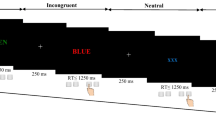Abstract
The work presented in this paper examines the time course of antecedent reactivation following movement gaps found in passive sentences. Using a cross-modal lexical priming technique, (re) activation of the subject noun phrase (NP) was examined at various critical points following the verb (near the posited gap) for verbal passive sentences and for active (control) sentences. Subjects made lexical decisions to visual targets that were presented at three locations during auditory sentence comprehension: immediately after the matrix verb, 500 msec after the verb, or 1000 msec after the verb. Responses to targets related to the subject NP were faster than those to controls during passive sentences (gap sentences), but not during active sentences (no-gap sentences), thus indicating that reactivation of the matrix subject did occur in the passive cases. Furthermore, the magnitude of the priming increased with distance and time from the verb, going from a nonsignificant trend at the verb to a highly significant effect at 1000 msec following the verb. These results are discussed in terms of both formal and processing models of language.
Similar content being viewed by others
References
Bever, T. G., & McElree, B. (1988). Empty categories access their antecedents during comprehension.Linguistic Inquiry, 19, 35–45.
Bever, T. G., Straub, K., Shenkham, K., Kim, J. J., & Carrithers, C. (1989). The psychological reality of NP-trace.Proceedings of NELS.
Chang, F. R. (1980). Active memory processes in visual sentence comprehension: Clause effects and pronominal reference.Memory & Cognition, 8, 58–64.
Chomsky, N. (1981).Lectures on government and binding. Dordrecht, The Netherlands: Foris.
Chomsky, N. (1986).Knowledge of language. New York: Praeger.
Cloitre, M., & Bever, T. G. (1988) Linguistic anaphors, levels of representation, and discourse.Language and Cognitive Processes, 3, 293–322.
Corbett, A., & Chang, F. (1983). Pronoun disambiguation: Accessing potential antecedents.Memory & Cognition, 11, 283–294.
Dell, G. S., McKoon, G., & Ratcliff, R. (1983). The activation of antecedent information during the processing of anaphoric reference during reading.Journal of Verbal Learning and Verbal Behavior, 22, 121–132.
Fodor, J. A. (1983),Modularity of mind. Cambridge, MA: MIT Press.
Fodor, J. D. (1991). Sentence processing and the mental grammar. In P. Sells, S. M. Shieber, & T. Wasow (Eds.),Foundational issues in natural language. Cambridge, MA: MIT Press.
Forster, K. I. (1979). Levels of processing and the structure of the language processor. In W. E. Cooper & E. C. T. Walker (Eds.),Sentence processing. Hillsdale, NJ: Erlbaum.
Gazdar, G., Klein, E., Pullum, G. K., & Sag, I. A. (1985).Generalized phrase structure grammar. Cambridge, MA: Harvard University Press.
Garnsey, S. M., Tanenhaus, M. K., & Chapman, R. M. (1989). Evoked potentials and the study of sentence comprehension.Journal of Psycholinguistic Research, 18, 51–60.
Kucera, H., & Francis, N. (1967).Computational analysis of present-day English. Providence, RI: Brown University Press.
MacDonald, M. C. (1989). Priming effects from gaps to antecedents.Language and Cognitive Processes, 4, 35–36.
MacDonald, M. C., & MacWhinney, B. (1990). Measuring inhibition and facilitation from pronouns.Journal of Memory and Language, 29, 469–492.
McElree, B., & Bever, T. G. (1989). The psychological reality of linguistically defined gaps.Journal of Psycholinguistic Research, 18, 21–36.
Nicol, J. (1988).Coreference processing during sentence comprehension. Unpublished doctoral dissertation, MIT.
Nicol, J. & Swinney, D. A. (1989). The role of structure on coreference assignment during sentence comprehension.Journal of Psycholinguistic Research, 18, 5–20.
Swinney, D., Ford, M., Frauenfelder, U., & Bresnan, J. (1988).On the temporal course of gap-filling and antecedent assignment during sentence comprehension. Unpublished manuscript.
Swinney, D. A., Onifer, W., Prather, P., & Hirshkowitz, M. (1979). Semantic facilitation across sensory modalities in the processing of individual words and sentences.Memory & Cognition, 7, 159–165.
Tanenhaus, M. K., Boland, J., Garnsey, S., & Carlson, G. N. (1989). Lexical structure in parsing long-distance dependencies.Journal of Psycholinguistic Research, 18, 37–50.
Author information
Authors and Affiliations
Additional information
The authors wish to thank Janet Nicol for her contributions to the materials and design of this experiment. This work was supported in part by NIDCD Grant DC01947 and by a University of Washington grant to the first author and an AFOSR grant (AFOSR 91-0225) to the second author.
Rights and permissions
About this article
Cite this article
Osterhout, L., Swinney, D.A. On the temporal course of gap-filling during comprehension of verbal passives. J Psycholinguist Res 22, 273–286 (1993). https://doi.org/10.1007/BF01067834
Issue Date:
DOI: https://doi.org/10.1007/BF01067834




